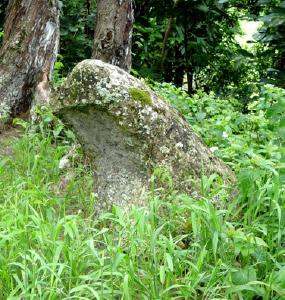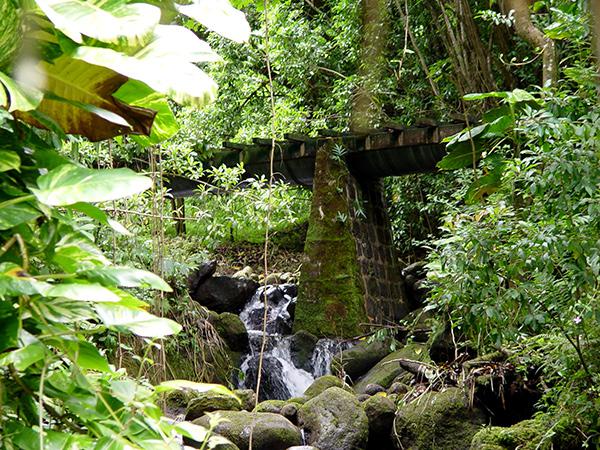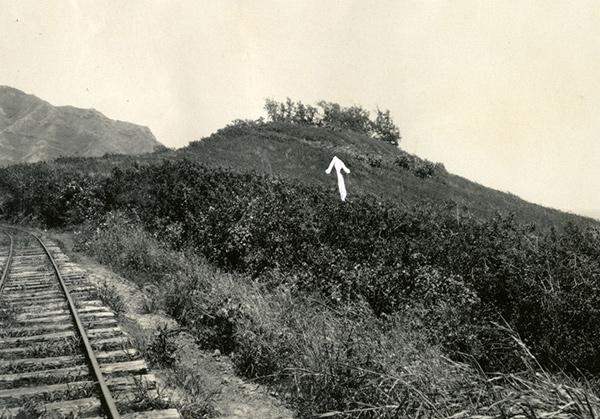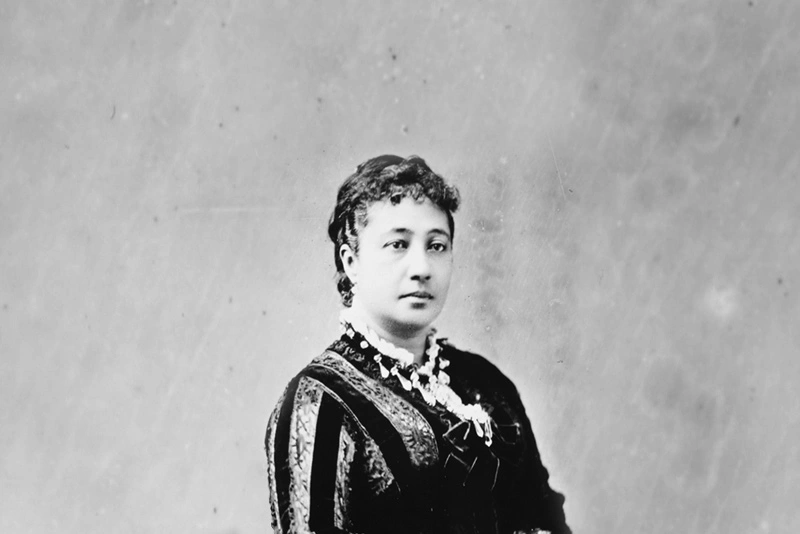Wahi Kūpuna

Ko‘a (fishing shrine)

‘Auwai

Irrigation Flume

Hanawao Pu‘u
Kamehameha Schools actively manages the wahi kūpuna (cultural resources) of Punalu’u Valley to mālama (care for) them, with the goal of creating a stewardship program that connects people to the rich history of the land. The Wahi Kūpuna program’s focus in Punaluʻu currently involves clearing overgrowth from cultural sites so they can be accessed for further research and study.
Punalu’u Valley has a number of remarkable heiau, shrines and other sites including:
- Kaumaka‘ula‘ula, located along the coast
- Hanawao, a prominent pu‘u (hill) near the front of the valley
- Pre-contact structural remains on the Kahana (southeast) side
- Makaua uka, on the Kaluanui (northwest) side of the valley
- A Ko‘a (fishing shrine and lookout) on the ridge between Punaluʻu and Kahana
- A historic loʻi complex in the upper valley
One of the most documented cultural resources in Punaluʻu is the Hanawao Heiau. The heiau sits on a small puʻu (hill) that is about 85 feet high. The majority of the heiau features no longer exist, but it is believed the Hanawao Heiau was large, approximately 200-by-100 feet. It is not known what the original function of the heiau was.
Traditional life in Punalu‘u revolved around the kahawai (stream) of Punalu‘u, also known as Wai‘ono (“delicious” or “tasty” water). Distribution was managed via ‘auwai (irrigation ditches) that diverted water to the lowland farm areas, and also to the muliwai (brackish estuary) and marine fishery. Punalu‘u’s main cove was known as Māmalu (“sheltered, protected”). Makaīwa (“Mother-of-pearl eyes”) was a canoe landing near what is today known as Punaluʻu Beach Park. Loko i’a (fishponds) were scattered around the muliwai in an area known as Kaluaolohe, just mauka of Kamehameha Highway.
In the mountains, the gathering of resources focused on: plants for lā‘au lapa‘au (traditional Hawaiian medicine); koa trees for wa‘a (canoes) and other uses; additional trees and shrubs including ‘ōhia varieties and olonā for various functions; high-quality basalt for ko‘i (adzes) and other tools; and birds and their byproducts for food and culturally significant items. The mountains and foothills were also places for po‘owai and māno wai (headwater dams and diversions to control and direct stream flow). The traditional Hawaiian system of resource management sustainably used the entire ahupua‘a, from the mountains to the sea, with different populations co-existing in the ma kai (coastal) and ma uka (mountain) areas engaging in symbiotic, reciprocal relationships.
Punalu‘u has long been a center of agricultural productivity which also gives it a rich cultural history. Prior to Western contact, the ahupuaʻa supported Hawaiians for hundreds of years with kalo (taro), sweet potato and a thriving fishery. In the late nineteenth century, Chinese, and later Japanese, immigrants settled in Punalu‘u where rice became the staple crop. In recent years, farmers from southeast Asia immigrated to Hawaiʻi and settled in Punalu‘u to farm. This area is home to many sites and places of importance from past settlements, including the remains of house sites, loʻi, ʻauwai, and heiau.
Punalu‘u also has a rich history of mo‘olelo (stories) about the area. Click here to learn more.















